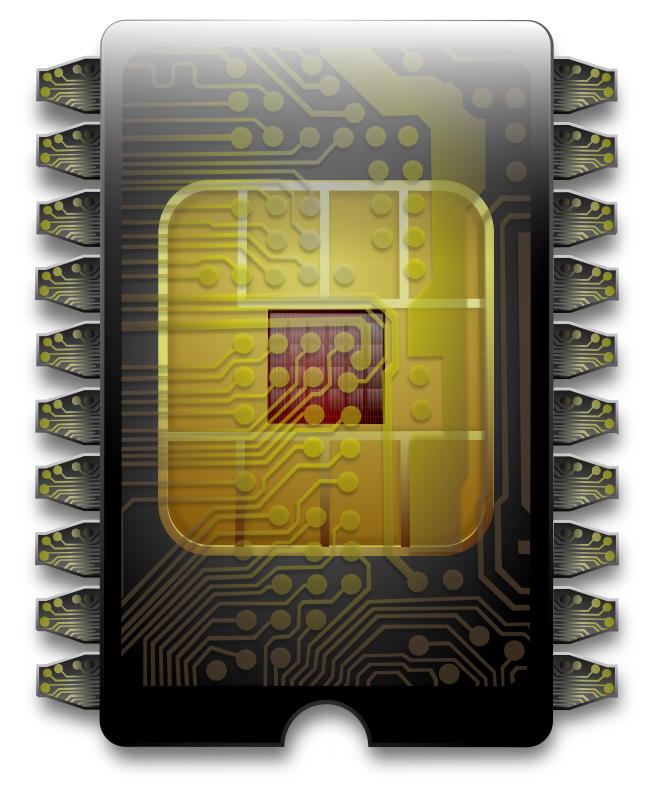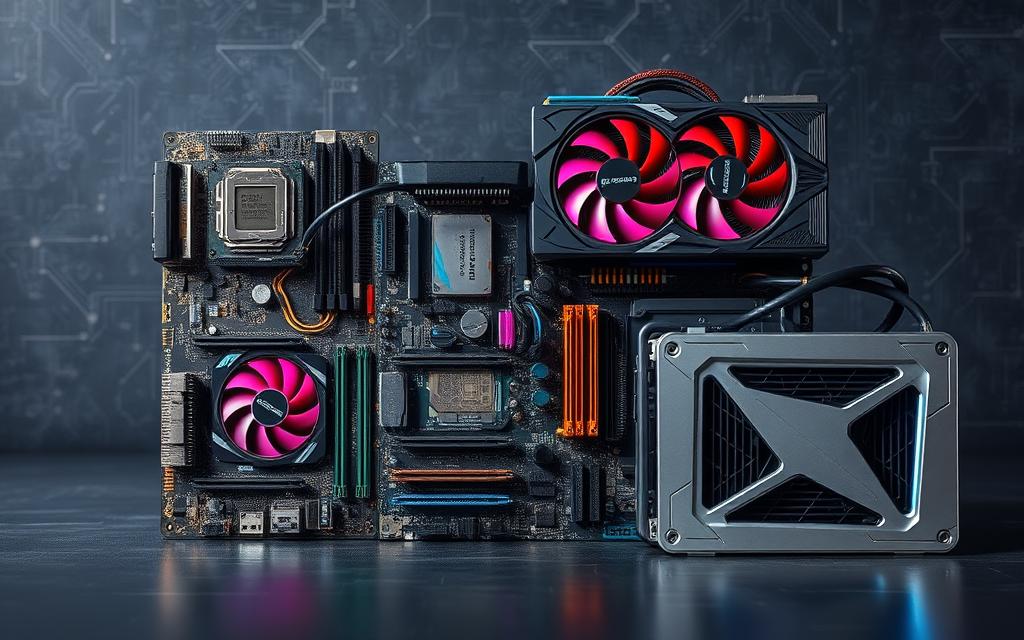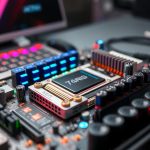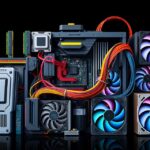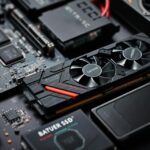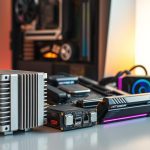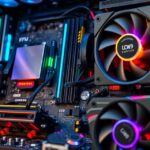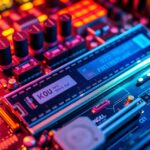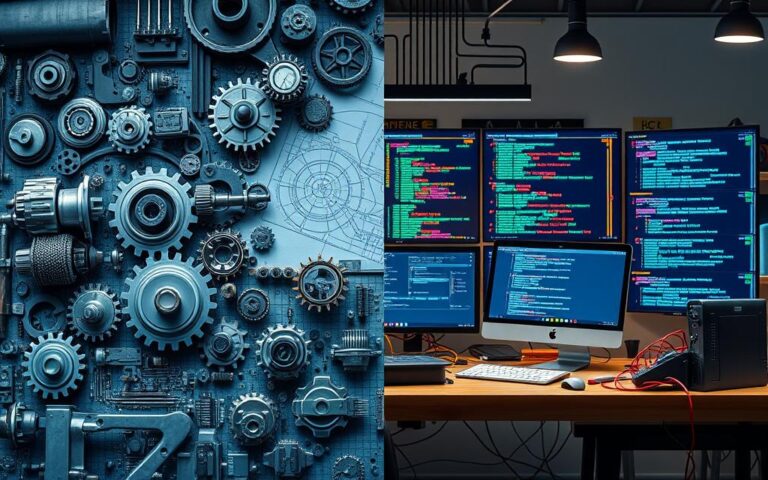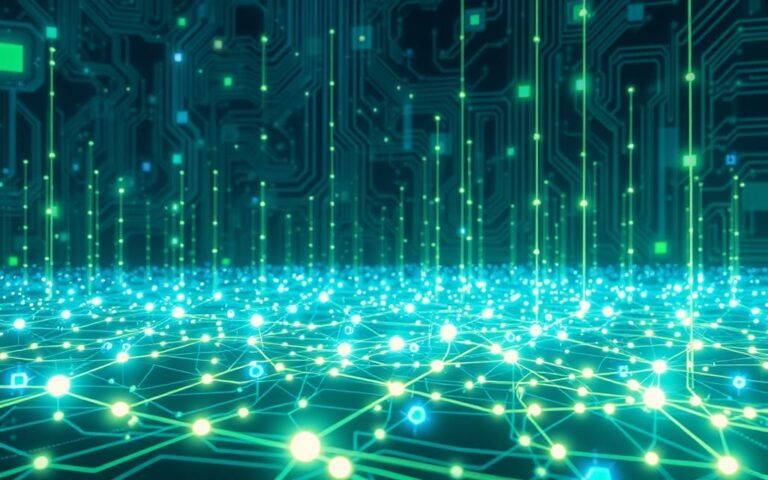The Four Main Types of Computer Hardware Explained
In today’s world, knowing about computer hardware is crucial for tech-dependent businesses. Computer hardware includes all the physical parts needed for computing. These parts play a big role in how well software works and how productive you can be. We’ll look at the four key types of computer hardware: input devices, processing devices, output devices, and storage devices. Each type has a special job in making a computer work.
Learning about components like the CPU, RAM, HDD, and devices such as keyboards and monitors is beneficial. This knowledge helps businesses deal with tech issues and plan for upgrades to boost performance. For in-depth info on computer hardware, check out this resource.
Understanding Computer Hardware
Computer hardware includes everything you can touch in a computing device. It’s vital for software to work well. Businesses need to know what hardware is to keep software running smoothly. Knowing about hardware helps with system upkeep and creating strong IT setups.
Definition and Components
There are four key types of computer hardware components. Understanding these parts is crucial for fixing problems and making computers work better.
- Input Devices: Tools like keyboards and mice let us send data to the computer. They help us interact with it.
- Output Devices: Devices such as monitors and printers show or print information. They make data easy to understand.
- Processing Devices: The CPU is essential as it changes data into useful information. It affects how well the system works.
- Memory Devices: RAM is for short-term storage when processing data. Devices like USB flash drives keep data for longer.
There’s more to computer hardware. For instance, RAM loses data when off, but SSDs keep data even when turned off. Devices like heat sinks keep the CPU cool to stop it from overheating.
Network Interface Cards (NICs) let computers join large networks. They use Ethernet to connect to the internet. Knowing these parts is great for anyone into IT hardware.
| Type of Hardware Component | Function | Examples |
|---|---|---|
| Input Devices | Send data to computers | Keyboards, Mice |
| Output Devices | Provide data in user-friendly forms | Monitors, Printers |
| Processing Devices | Transform raw data into meaningful information | CPU |
| Memory Devices | Store data temporarily or long-term | RAM, SSDs, USB Flash Drives |
Input Devices: The Gateway to Interaction
Input devices are how we tell computers what to do. They allow us to enter data input in various ways. By knowing about different input devices, we learn how to interact with technology more effectively. Here are some key types you should know about.
Common Types of Input Devices
We’ve got a lot of options for input devices. There are classic ones like the keyboard and mouse. But we also have newer types to choose from. Let’s explore them further:
| Type of Input Device | Description | Examples |
|---|---|---|
| Keyboard | A basic tool for typing and navigating. | Desktop keyboards, laptop keyboards, virtual keyboards |
| Mouse | It helps users accurately move around the screen. | Wired mice, wireless mice, trackballs |
| Touchscreen | This screen responds directly to your touch. | Smartphones, tablets, touchscreen monitors |
| Scanners | They turn paper images and texts into digital files. | Flatbed scanners, handheld scanners, 3D scanners |
| Voice Input | It translates spoken words into commands. | Microphones, voice-activated assistants |
| Composite Devices | These combine several input methods into one. | Gaming controllers, graphic tablets |
Every input device has its own special function for handling data input. Knowing about them helps us pick the right tools. It makes using computers a better experience.
Output Devices: Translating Data into Action
Computers need to share information efficiently, and output devices play a key role. They change processed data into something we can easily understand. It’s important for devices like monitors, printers, speakers, and projectors to communicate effectively. Each device has a unique role in showing information.
Types of Output Devices
Important output devices include:
- Monitors: These are the most common, with 80% market share. They show text, images, videos, and play audio. This makes them vital for interacting with computers.
- Printers: An essential part, printers come in two types. Impact printers have 30% of the market. Non-impact printers like laser and inkjet have 45%. They are chosen for their efficiency and high-quality outputs.
- Projectors: Making up 10% of the market, projectors are perfect for showing content on big screens. They are great for presentations, teaching, and entertaining large groups.
- Speakers and Headphones: These are 8% of the output devices. They meet different needs for sound.
- Scanners: Scanners turn paper documents into digital files. This helps in recording data.
Understanding these devices helps us see how they improve data output. To learn more about output devices and their role in communication, click here.
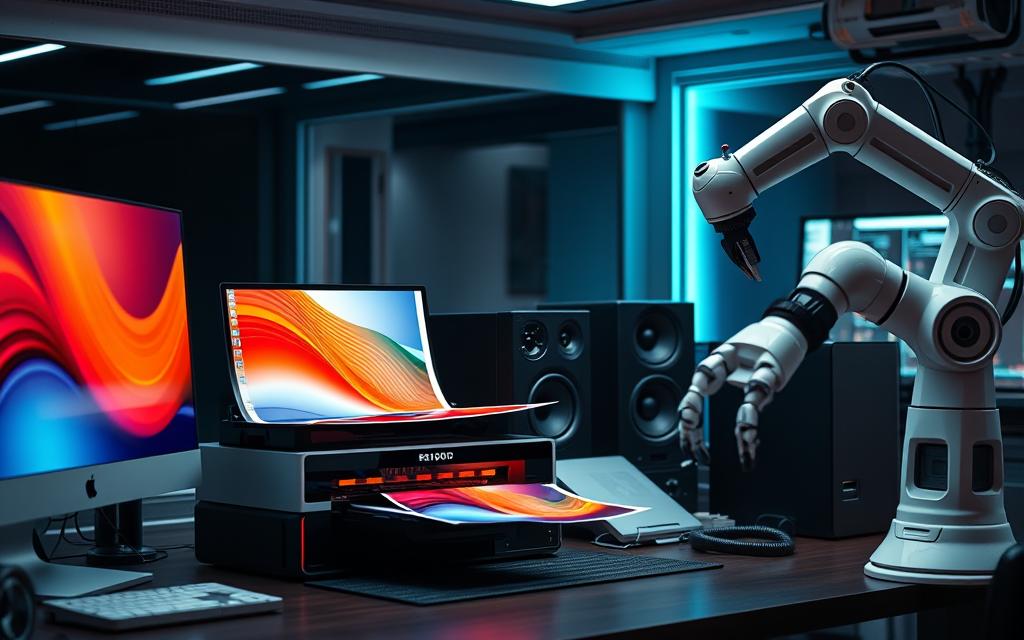
What Are the Four Main Types of Computer Hardware
There are four key types of computer hardware. These are input devices, processing devices, output devices, and storage devices. Each plays a vital role in how computers work.
Input devices let users talk to computers. For example, keyboards and mice help us input data and commands. This connection is vital for interaction.
Processing devices, led by the central processing unit (CPU), are the brain. They handle all the instructions in a computer. The CPU can do many tasks quickly, thanks to its advanced tech.
Output devices turn data into something we can understand. Monitors, printers, and speakers show or play the results. This way, we can see or hear what the computer has done.
Storage devices save our data for later. RAM makes it easy to reach data we’re currently using. SSDs and hard disk drives (HDDs) store files and programs. SSDs work faster than HDDs.
Combining these four hardware types makes computers versatile. They can handle simple tasks or complex projects. This teamwork makes our digital life possible.
| Type of Hardware | Examples | Function |
|---|---|---|
| Input Devices | Keyboard, Mouse | Enable users to enter data |
| Processing Devices | CPU, GPU | Manage and execute instructions |
| Output Devices | Monitor, Printer, Speakers | Present data in a user-friendly format |
| Storage Devices | HDD, SSD | Store data for short and long-term access |
Conclusion
A thorough understanding of computer hardware is essential for anyone keen on technology. It helps us use our devices better and shows how important hardware is in our lives. We learn how input devices let us interact, processors work with data, output devices share information, and storage units keep our data safe.
Technology has grown a lot over the years. Now we have tinier, energy-saving CPUs and the use of SSDs that boost how well computers work. The modern CPUs with many cores let us do many things at once. This means we can get more work done faster in different areas. Also, having enough RAM is crucial, especially for those into graphics or gaming, as it makes the computer run smoother.
Understanding these hardware parts and how they work together is key for effective technology use. As the world becomes more digital, knowing about these elements helps us take care of and improve our systems. This knowledge is the base for future tech successes.
FAQ
What are the main types of computer hardware?
The four main types of computer hardware are input devices, processing devices, output devices, and storage devices. Each plays a crucial role in a computer system.
How do input devices work?
Input devices like keyboards, mice, scanners, and touchpads let users send data to the computer. This makes interaction and data entry possible.
What role do output devices play in computing?
Output devices turn processed data into something we can understand. For example, monitors, printers, and speakers show us visual, printed, or audio outcomes.
Can you explain the function of processing devices?
The Central Processing Unit (CPU) is a primary processing device. It manages and carries out instructions, running software and tasks in computers.
What is the importance of storage devices?
Storage devices hold data for both temporary and permanent use. They are vital for saving and accessing digital info on demand.
What are some common issues with computer hardware?
Computer hardware can slow down, overheat, fail, or face compatibility problems. These issues can usually be fixed by upgrades or maintenance.
How can I upgrade my computer hardware?
To upgrade computer hardware, you might replace or add parts like RAM, hard drives, or graphics cards. This boosts performance, speed, or storage.
